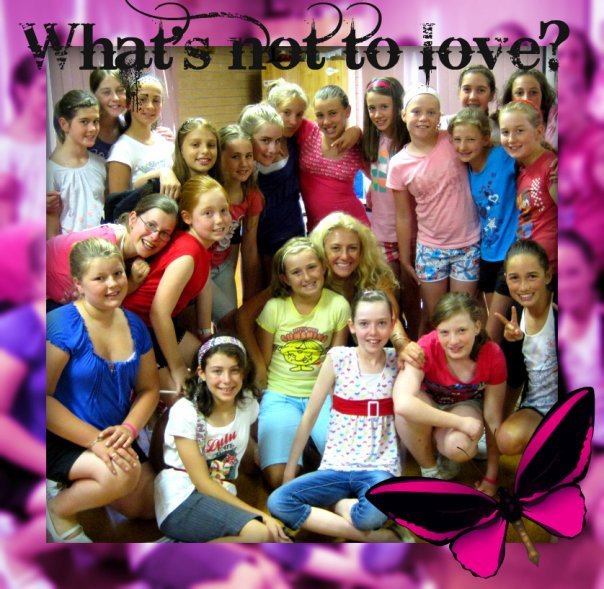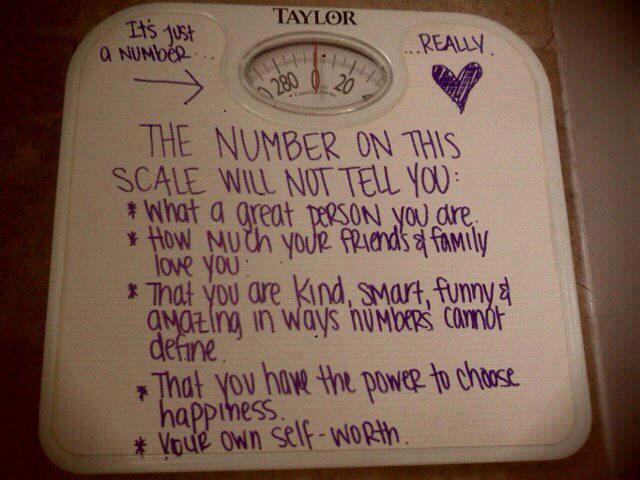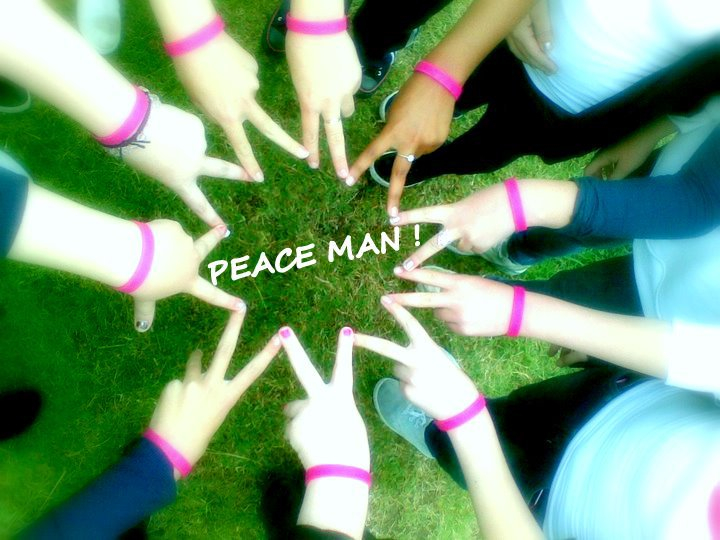I was thrilled to be asked to contribute to “Destroying The Joint – Why Women Have to Change The World,” an incredible new collection of writing initiated as a response to radio broadcaster Alan Jones’ comments that Australian women leaders were ‘destroying the joint’. Editor Jane Caro describes the work in her introduction:
The women who have contributed their responses to this book represent a wide cross-section of backgrounds, ages, beliefs, experiences and biases. Feminism is a broad church…Some of their stories will make you laugh. Some will make you cry and some rage with fury. The following pages include polemic, satire and impassioned arguments. The one thing they all share is a desire to change the world and make things fairer: for women, for men, for children, for the disabled, the indigenous, the migrant, the poor, the gay, the straight, the despised and, not least, the planet. Some people call that destroying the joint.”
The publishers, University of Queensland Press, have very kindly given me permission to republish my essay here.
Beyond Jeering – An unapologetic love letter to teen girls.
 Nine times out of ten when I am introduced as a guest on radio or television, the host makes a comment to the effect that I must be somewhat unhinged to have devoted my career to working with teen girls (insert knowing smirk at just how awful they can be) or looks at me with genuine bewilderment, almost unable to comprehend why anyone would enjoy working with a group that’s 50 shades of trouble. I can see them thinking: ‘Is she perhaps just naive about what girls are really like?’ At best, they may say I’m brave.
Nine times out of ten when I am introduced as a guest on radio or television, the host makes a comment to the effect that I must be somewhat unhinged to have devoted my career to working with teen girls (insert knowing smirk at just how awful they can be) or looks at me with genuine bewilderment, almost unable to comprehend why anyone would enjoy working with a group that’s 50 shades of trouble. I can see them thinking: ‘Is she perhaps just naive about what girls are really like?’ At best, they may say I’m brave.
I don’t see myself as crazy or brave. What I do see are the unhelpful common perceptions of teen girls in our culture.
How are our daughters labelled when they hit adolescence? They have been reduced to a series of caricatures. There’s Little Miss Cynical, the eye-rolling teen dismissing everything with a ‘whatever’; Little Miss Surly, the angry, no-one-understands-me bitch; Little Miss Stupid, the kind of girl TV executives love to portray on reality TV shows, helping to really ingrain the ‘clueless’ stereotype in our psyches; Little Miss Slut, she of the short skirts, provocative pouts and insatiable sexting; Little Miss Diva, too spoiled to work, clean her room or contribute to society; and Little Miss Queen Bee, who spends all her time creating burn books or Gossip Girl-esque sites where she can play the compare-and-despair game of ranking and rating her peers.
The media and entertainment industries are hypercritical of girls and take an almost salacious pleasure in exposing girls-gone-bad type stories. Every week I appear on a panel on Channel 9’s Mornings show to talk about issues affecting girls and women. When they asked me to discuss a physical fight between two young women on the show The Shire, within weeks the clip of that discussion had attracted some 135 000 views – in comparison to the few hundred views most of my clips attract. It’s hard to imagine a story about a fight between two young men on a dramality show garnering that level of attention from the media or viewers.
Even those who should have teen girls’ best interests at heart, the people who write parenting books, often describe teen girls in terms that are less than kind or generous of spirit. Walk down the parenting aisle of any bookstore and you’ll find plenty of covers depicting adolescent girls as sluttish or surly. As one girl said to me after a seminar, ‘If I came home and found my mum reading a book that presented girls in the way some of these books do, I’d be so hurt. We don’t read books entitled Parents are Pains in the Arses, do we?’
I am not naive, either. I do not view girls through rose-coloured glasses. I began my career as a high school teacher and worked in schools for ten years, predominantly with students at risk, who always give it to you real and raw. Since I founded my own business in 2003, my company has worked with tens of thousands of girls from all kinds of backgrounds, and I have a teen daughter. Yes, I know girls can be challenging. But I wonder at times if they slip into this mode because they feel it is expected of them. There are times when my daughter can become almost a caricature of the difficult teen girl – a fully fledged Ja’mie from Chris Lilley’s satirical Summer Heights High – and, in fact, the best way to snap her out of it is to casually call her Ja’mie and say that her behaviour is ‘so random’.
Binge drinking, body image anxiety, friendship fallouts, self-harming, navigating the ever-changing online world: these issues are all impacting our girls, and we should care. But the answer lies in education – not moral panic, or policing and patronising. We must give girls the skills they need to make informed choices and encourage them to turn their critical gaze on their culture, not themselves and each other.
And truly, being a pain is not typical of only the teen-girl experience – look around you! Just as many adults are struggling with alcohol, poor self-esteem, toxic relationships and stress.
I think it is far too easy to lose sight of the fact that girls are not one-dimensional stereotypes. Girlworld is made up of a multitude of identities, personalities, talents, skills and ideas. It is this diversity and the vast complexity of girls that delights me and that I think our culture often refuses to acknowledge. Of course, girls might have their Little Miss moments of acting cynical or surly or spoilt, but they are so much more than that.
Bullying and bitchiness get a lot of press, but I am often astonished by the intensity of the affection teen girls have for each other. To see a group of teen girlfriends together is a beautiful thing. They hug each other and snuggle together, styling each other’s hair, with giggled whispers and knowing looks. I wonder sometimes if we envy them their unbridled enthusiasm for each other and the intimacy of their relationships with their BFFs.
And this warmth, generosity and caring doesn’t just stop at their circle of friends.
Teen girls are destroying the joint – but not through dysfunction, apathy and nastiness, as we are led to believe. Make no mistake, for every media report of a girl in crisis, there are stories aplenty in the real world of remarkable young women doing extraordinary things. Some sail off to explore the world, Jessica Watson style. But there are plenty more everyday girl heroes. I am full of optimism and pride in the way our girls are taking on, and making over, their world.
The teen girls at a school I worked at in early 2012 in Sydney were so inspired by Real Girl Power, our workshop on the history of the women’s movement, that, at lunchtime, a group of them waltzed up to a particularly sexist boy in their year group. Samantha, the group’s nominated spokeswoman, told him, ‘You always like to say, “Go make me a sandwich,” whenever we say something you don’t agree with in class. Guess what? There will be no sandwiches for you. And you don’t have to like what we say, but you do need to listen. If you try to dismiss us again, we are all going to start clapping loudly every time you speak. It’s going to really shine the spotlight on you, and we’re not sure you’re going to like that.’
There were no more orders for sandwiches, Samantha emailed to tell me. And we realised that collectively, we were strong. You could see the fear in all the boys’ eyes after that … LOL. I loved that this made her laugh – there is indeed a joy in claiming one’s power.
A teen girl in Western Australia, named Daffodil, shared with me her own story of activism: ‘This year, my school, St Brigid’s College, has given me the opportunity to complete a personal project and … I have been inspired to raise awareness of self-esteem issues in teenage girls in our society. I have also started to create a beauty campaign for the school community, which includes posters and affirmation cards promoting true beauty.’ Daffodil posted images in the school toilets and on classroom doors that reminded her classmates that they are more than just their bodies, they are somebodies.
A group of teen girls in Victoria decided they didn’t know much about feminism and why it mattered, so they chose to do a research assignment on it as part of an interest project at school. They interviewed me and a number of other women. Then they presented their work to their classmates and invited them to join the Young Feminist group they were starting at school. They had a 70% take-up.
I am inspired by the fifteen-year-old who had a baby, as a result of being raped, and turned up at the school carnival the next week to join in sporting events and cheer on her classmates. And by the fourteen-year-old who sends me poems she has written on what being beautiful really means and tells me how she will survive being bullied and emerge a shinier girl.
I am impressed by Tess Corkish, who at age eighteen was outraged when a popular retailer began selling products she thought were sexist. She transformed her outrage into something positive by starting an online petition. Amassing thousands of signatures and drawing media attention, the campaign resulted in the products being withdrawn from store shelves.
Then there’s Jemma Ryan, seventeen. After seeing me speak at a girls’ education conference in Melbourne in 2009, Jemma successfully lobbied to have me present at Clonard College, where she was school captain. Jemma and I have stayed in touch ever since. She flew to Sydney earlier this year to stay with me and my family to help me in my office before she commenced her uni studies in journalism. Anything you need I will do, no job too small! she emailed me beforehand. My goodness, it’s an opportunity, a privilege I am so, so, so lucky to have!! How is that for a go-get-’em, no-divas-here attitude?
Jemma also writes for her local paper; she has been doing that since she was fourteen. When I asked her how she had fitted in studying, her role as a student leader, her part-time job at Bakers Delight and writing for the paper, she explained, ‘Well, I just have to be time conscious, I guess. My current boyfriend and I, for example – well, we decided just to be friends until I completed Year 12. There was no time for distractions. When we first met, I was in my final year of high school and was really committed to my studies … some would say school was my first love. My first love and I had been together for thirteen years, and I wasn’t about to stop spending time with it for a boy! So when I did meet someone (a boy that is, not another school), I had to find a balance that worked for all three of us (yes, me, boy and studies). I know how it sounds, this girl was all about the parent pleasing, but that wasn’t it at all, it was about values and priorities. I only had a few months of hard study to go, and I knew anyone that really liked me for me would respect my school lovin’ ways!’
And what does Jemma plan to do with all her smarts and determination? Join the revolution, of course, and work on empowering the next generation of young girls. She says, ‘I can’t think of anything that would be more fulfilling!’
Me either, Jem.
The choices made by girls like these aren’t often shared in popular culture – but they do deserve our recognition.
We must try not to let the slammed doors, angry silences or sarcastic asides of adolescence blind us to girls’ essential lovableness. And we must also not be distracted by the toxic culture our girls are immersed in and that they do sometimes struggle with, for there is a risk that it can blind us to an even more important reality: not only the lovableness, but also the strength and resilience, of girls.

Destroying The Joint will be available in all good bookshops from 24th April, R.R.P. $29.95.









 When women are involved in writing a script, the percentage of female characters jumps by 14.3 percent, according to the Annenberg study. But Hollywood is still dominated by men. On the top 100 movies, women made up only:
When women are involved in writing a script, the percentage of female characters jumps by 14.3 percent, according to the Annenberg study. But Hollywood is still dominated by men. On the top 100 movies, women made up only:
